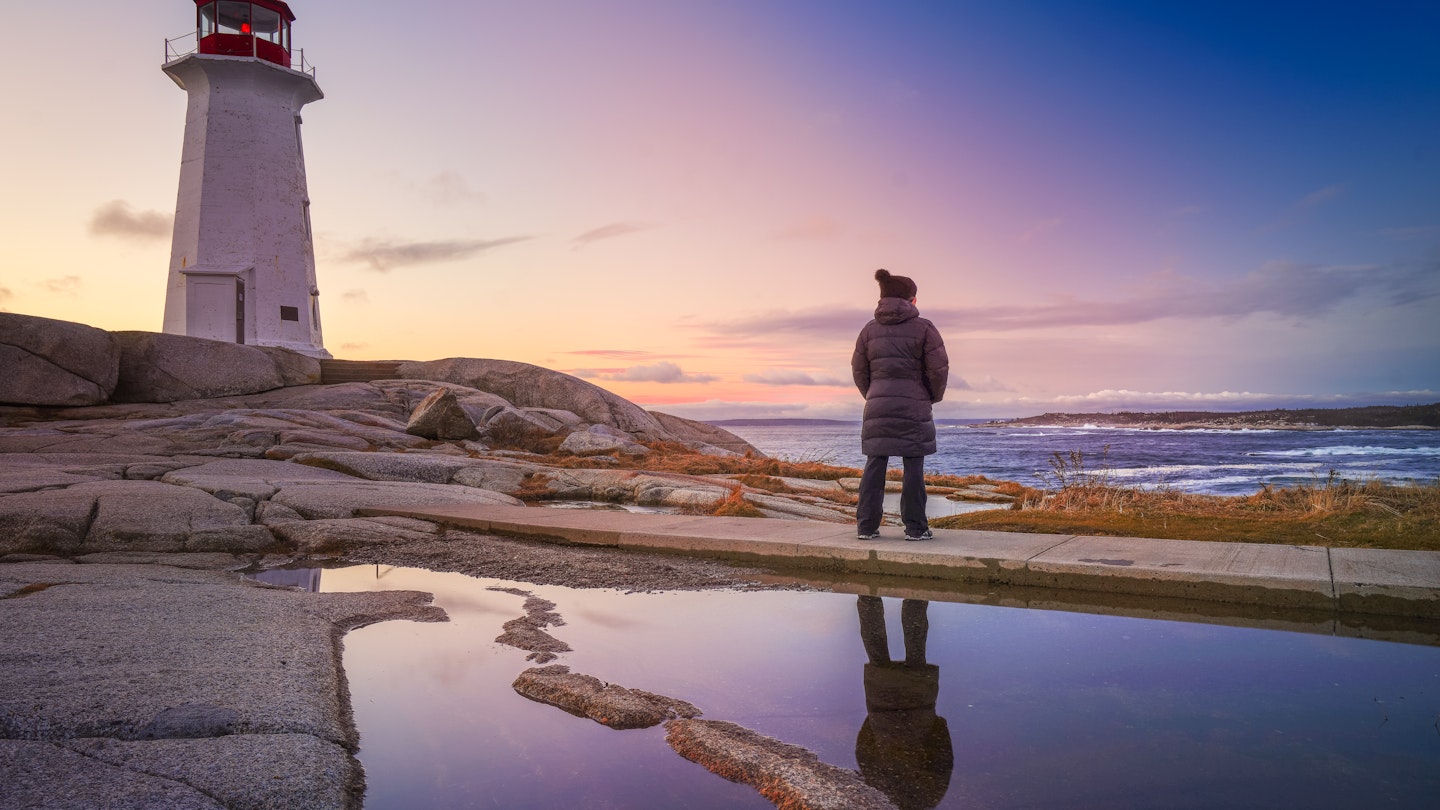Embraced by the North Atlantic, Nova Scotia’s seasons, weather, and attractions follow a predictable annual cycle. The icy Labrador ocean current that slips past the east coast tempers temperatures year-round, clearing summer skies, whipping up winter storms, and delaying seasons by weeks.
The peak tourist season runs from July through August, characterized by outdoor festivals, boat tours, museums, and restaurants in full swing. The Halifax waterfront serves as a vibrant hub for visitors, nearly always bustling with activity. Increased demand during this time results in higher expenses for accommodations and activities.
Many significant attractions, museums, parks, and guided activities are not yet fully operational in late spring and start to wind down in early fall. These months, particularly fall, are ideal for budget travelers. Once winter arrives (November to April), many attractions either close temporarily or leave their grounds open and unserviced for occasional visitors. However, winter is transforming in Nova Scotia—weather patterns are becoming milder, and new activities are emerging. Prices vary with the ebb and flow of the seasons.
July through August: High Season in Nova Scotia
Characterized by high blue skies and warm breezes, July and August offer a spectacular experience that many residents cherish. During summer, you might find that seaside cottages and glamping domes are completely booked months in advance, as scores of visitors flock to the province.
Summer also marks the return of whales to the Bay of Fundy and around Cape Breton, providing fantastic opportunities for encounters with these magnificent creatures via whale-watching tours from ports such as Tiverton and Pleasant Bay. With numerous beautiful beaches, Nova Scotia offers a range of outdoor activities, including hiking and camping, without the burden of excessive crowds due to the expansive nature of the coastline.
Seaside patios, craft beer taprooms, wineries, and a lively calendar of events draw residents and road trippers eager to explore. The festival season peaks with outdoor events, including the Stan Rogers Folk Festival in Canso, the Halifax Busker Festival, and Canada Day celebrations on July 1 across the province.
September and October: Fall Foliage and Bountiful Harvests
Many locals consider September and October the most delightful months in Nova Scotia. Moderate temperatures replace summer heat, delivering enjoyable experiences for visitors. Prices drop, and forests ignite with stunning fall colors, particularly on scenic drives like the Cabot Trail. Most attractions remain open for what many recognize as a second tourist season.
Farmers’ markets overflow with fresh produce, with a noteworthy nod to Howard Dill, known for cultivating giant pumpkins. His legacy continues through giant pumpkin weigh-offs and even pumpkin boat races. The fall harvest season brings music and celebration through events like the Celtic Colours Festival in Cape Breton and the Atlantic International Film Festival in Halifax.
November to March: Indoor Festivals and Winter Fun
As cold rains blanket Nova Scotia from November onward, the potential for snowfall becomes increasingly likely. Winter storms, locally called nor’easters, may disrupt daily life by blocking roads and occasionally causing power outages. However, these conditions also provide excellent opportunities for skiing in between storms.
Watch for vibrant special events throughout winter. The Nova Scotia Lobster Crawl fills February with festive gatherings, cooking competitions, and restaurant deals. Additionally, the living history museum, Sherbrooke Village, hosts old-fashioned Christmas dinners, while themed tours continue to attract winter enthusiasts. Downtown Halifax thrives during winter months, transforming local pubs, taprooms, and music venues into lively hotspots.
April to June: Nature Awakens
As spring arrives in April, Nova Scotia undergoes a vibrant transformation. Expect a range of weather conditions—from chilly nights and the possibility of late snow to warm, summer-like days by June. The landscape flourishes in vivid greens, and the blooming of wildflowers makes spring a fantastic time for hiking. Gardens reach their peak during late June, offering stunning views.
While pesky blackflies can make early spring uncomfortable, they are primarily dormant along the coast, where ocean breezes mitigate their presence. Cozy fog may blanket the coastline, adding a mysterious charm that many visitors come to appreciate.
Explore Nova Scotia:
- Visit stunning beaches and hiking trails.
- Discover the rich cultural events and festivals throughout the year.
- Experience outdoor adventures, including whale watching and food festivals.
This article was last updated in May 2024.





